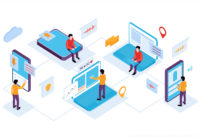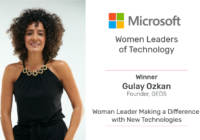Companies like GEDS are the business world’s laboratories in which we develop concepts for working models and our core businesses. We exist on the margins where we do and experience things that eventually become mainstream for corporations.
One of those things is the normalization of our unconventional employee needs and working models, such as remote working and online meetings. This, of course, has been forced upon corporate culture by the Covid-19 pandemic.
Since the pandemic closed the world down, GEDS has been focussing on one very specific dimension of its impact on society – employee experiences and how they affect business. We would like to share a few insights from our observations and experiments from our own lab.
Searching for New Working Models
Over the past 10 years, people’s expectations of their companies have dramatically changed as they search for more mobility, freedom, and to be away from the city. We have felt this trend, specifically in the creative space.
A decade ago, we wanted to innovate our working model and talked to several human resource professionals so we could better understand alternative business models and working models that people are comfortable with. The answers were interesting.
One such concept was people coming together as partners and working as independent consultants. Another was everyone at the company with a different contract model.
These models inspired us to expand our company into international markets with several talented people from other counties in the years that followed.
The risks to health posed by the pandemic also led people to start questioning whether there were alternatives to going into the office from nine-to-five and instead of working from home and maybe even living outside the urban environment.
How to address the changing needs of employees?
“If there is a new value system, we need to ask new questions to redefine the problem. If everything is changing, questions must change too. This is where design enters into the picture,” says Banny Banerjee, Director Stanford ChangeLabs
As Banny points out, we need to change questions and ask employees again about their needs, problems, and expectations. Based on their answers and observations, we can model personas and their journeys, which can tell us how to develop approaches and make decisions based on this data.
As a strategic design consultancy, we have devised several personas based on our observations and conversations with people around us during the pandemic. Of course, your own employees would be different personas and have other journeys.
Let’s meet our personas – briefly:
Social Sally- Eager to return back to the Office
Sally misses the social setting of the office and cannot motivate herself at home. She thinks that she will get infected at one point. So, she prefers to be social with her friends.
Upset Umar – Eager to return back to the office
Umar has kids at home and feels very exhausted. He needs to find a quiet place to work and desperately wants to go back to the office
Rooted Ruth – Doesn’t want to go back
Ruth does not want to go back to the office. She thinks that she can do the same work at home. She even considers moving out of the city and living somewhere close to nature. However, her employer asked her to come back to the office.
Worried William – Doesn’t want to go back
William is very worried about getting sick. He thinks it’s too early to go back to normal. He doesn’t trust his company or the authorities to take proper measures. He also doesn’t trust people to socially distance or be hygienic and certainly does not want to go back to the office.
Unwell Sarah – Can’t go back
Sarah got Covid-19 in the early stage of the pandemic and still doesn’t feel well. She has kids and worries that she might infect them but has no one to leave them with.
Bound Beatrice – Can’t go back
Beatrice is a single mom and can’t find a way to take care of her kids as she can’t afford a babysitter but at the same time, she worries that her kids might get infected.
Dutiful David – Must go back
David’s job cannot be done remotely since he’s a security guard at a bank. He interacts with many people during the day so he worries about getting infected. He can’t afford to quit his job.
New Working Models and Approaches
We can look at these personas and their journeys and can easily come up with new models to suit them. They might be:
- Remote work – Less salary + office set-up at home + internet connection +
- Hybrid work – Remote + office working hours
- Seasonal hybrid work – Full time in winter in the office, remote in other seasons.
- Summer remote – Only summers working remotely.
These can be populated further with hourly wages for remote or office works.
Whatever model you want to build, your starting point should be human data, which should be gathered based on user research. The rest can be achieved with the design processes and also compensation package models.
We recently run a webinar on the subject with HR executive Fulya Taskin from ING Bank. You can watch it on our Youtube channel.
If you have questions or comments you can contact with us.



